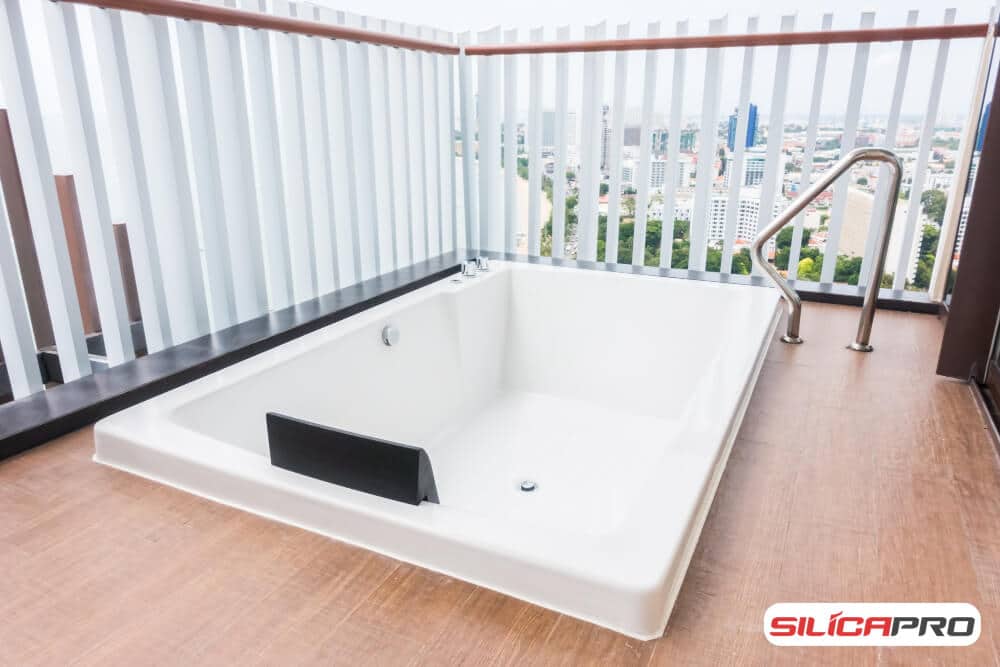
The growing interest in fiberglass flooring is understandable, thanks to its many advantages. Fiberglass-reinforced flooring often comes in various sizes and can be installed in many areas of the home, including bathrooms. It helps create a shock-resistant surface, adding strength and durability. Fiberglass floor tiles are also relatively easy to install and maintain. By cleaning them regularly, you can extend the service life of the floor and avoid expensive repairs or replacements.
Contents
Using Acetone to Clean Fiberglass Floor Tiles: 10 Steps
Fiberglass floors—in bathrooms especially—are prone to stains such as soap scum or even rust spots near metal fixtures. One product that can help remove stubborn stains is acetone, but note that using strong solvents on fiberglass should be done carefully to avoid dulling or damaging the finish. Below are guidelines you can follow; however, always check your flooring manufacturer’s instructions before using any harsh chemical.
Important Principles
- Fiberglass tends to be easier to clean than many other materials.
- Using cloths or paper towels might leave lint behind, so use lint-free or microfiber cloths if possible.
- Contact with fiberglass dust or solvent fumes can cause minor irritation; use protective gear and work in a well-ventilated area.
Step-by-Step Instructions
- Prepare personal protective equipment (PPE). Wear gloves, a long-sleeved shirt, long pants, a mask, and eye protection. This protects you from both cleaning chemicals and any fiberglass particles.
- Remove or cover furniture and other items in the room to protect them from fumes or spills. If you have fabrics like towels, mats, or bed linens nearby, you may want to remove or wash them to avoid lingering odors or chemical residue.
- Clear the room of unnecessary items. This allows you to reach the entire floor surface without obstruction.
- Vacuum the room in stages to remove dust or debris. Let dust settle for 10–15 minutes after the first pass, then vacuum again. Repeat up to 4 or 5 times if you suspect fiberglass dust is present (for instance, after a renovation).
- Wipe down or clean the floor surface (and any objects) with a mild cleaner or a damp cloth to remove initial grime.
- Optionally, repeat Steps 4 and 5 for a more thorough cleaning.
- Pour about 5 tablespoons of acetone into a small bowl or bucket. (Use caution—acetone is highly flammable and should be used in a well-ventilated area.)
- Dip a clean white cotton or microfiber cloth into the acetone and wring out the excess.
- Gently wipe the surface of the fiberglass floor tiles to lift stubborn stains. Be sure to spot-test in a small, inconspicuous area first to ensure the acetone does not damage the finish.
- Dampen a cloth with warm water and wipe the surface again to remove any residue. Open windows or use a fan to ventilate the room and help the floor dry.
Recommended Bathroom Flooring Types
Beyond roofing or wall panels, fiberglass-reinforced materials can be suitable for flooring. Still, it is vital to confirm with the manufacturer that the fiberglass flooring you choose is rated for bathroom or wet-area use. Here are a few reasons fiberglass flooring might work well in bathrooms:
- Water-Resistance: Fiberglass flooring often has good water-repellent properties, making it suitable for bathrooms, balconies, or laundry areas frequently exposed to moisture.
- Slip Resistance: Some fiberglass-reinforced floors come with a textured surface for slip resistance. Always confirm your product’s slip rating.
- Design Versatility: You can find fiberglass flooring in a variety of patterns and colors to match different bathroom styles.
- Durability: Fiberglass-reinforced floors are generally resistant to minor scratches and dings.
- Longevity: With proper care and maintenance, fiberglass-based flooring can last for years—sometimes up to two decades.
Care and Maintenance Tips
- Clean up spills quickly. Even water-resistant floors fare better when you don’t let water pool on them for long periods.
- Avoid overly harsh chemicals. Acetone can be used for spot-cleaning tough stains, but do not routinely soak the entire floor in acetone or similar solvents.
- Repair damage promptly. If you notice chips or deep scratches, address them quickly to prevent moisture intrusion or further wear.
- Regular cleaning: Use a soft broom or vacuum with a hard-floor setting to remove daily dust and dirt. Follow up with a damp mop using a mild floor cleanser that’s approved for fiberglass or vinyl surfaces.
